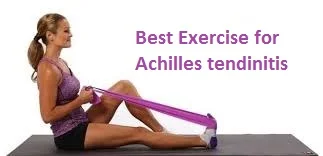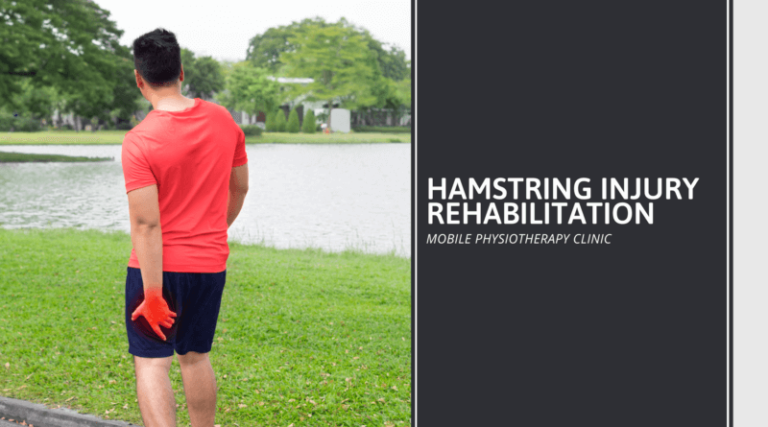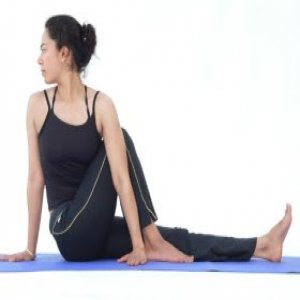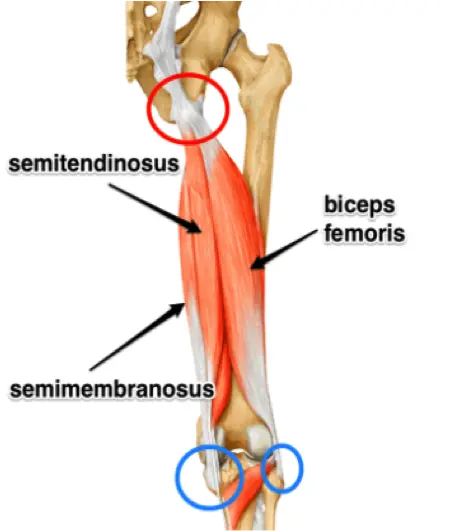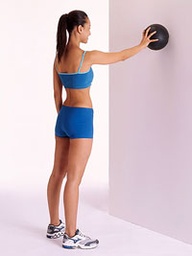Best Exercise for Achilles tendinitis
Exercise is an important part of your overall treatment of Achilles tendinitis to recover permanently. Exercise helps to improve the strength and flexibility of your Achilles tendon. Strengthening and stretching Exercise makes your Achilles tendon powerful and flexible enough to do all activities with ease.
If you have Achilles tendonitis or inflammation of your Achilles tendon, you can do stretches to help recovery or healing. The exercises include the deformation of the tendon with jumping and hopping-based exercises. Exercises help the tendon absorb and regain its capacity and strength.
What is Achilles tendinitis?
Achilles tendonitis is usually produced by severe and uncontrolled physical activities. Symptoms include stiffness, weakness, discomfort, burning, and limited range of motion.
Sometimes, Achilles tendonitis is called Achilles tendonitis, but the 2 conditions are not the same or equal. Achilles tendinopathy is the degeneration and breakdown of the cartilage in the tendon. It progresses when Achilles tendonitis becomes chronic.
Other situations that can affect the area involve Achilles tendonitis or small tears in the tendon, and Achilles tendon damage, a limited or complete tear. These situations are more likely to progress if Achilles tendonitis is not treated.
What to do after an injury?
How Is Achilles Tendonitis Treated?
Treatment for Achilles tendonitis starts with taking a break from the task that led to the injury. It is usually ok to do non-weight-bearing exercises such as swimming, biking, & stretching tasks like yoga. If someone with Achilles tendonitis doesn’t relax, the tendon can become more injured.
Your health care provider also may recommend:
- stretching the Achilles for 30 seconds at a time three-four times a day
- putting ice or a cold pack on the heel every hour for 15 minutes at a time. Put a thin or soft towel over the skin to protect it from the cold.
- taping or using athletic wrap all over the Achilles tendon & ankle joint
- elevating the foot above the level of the heart to assist with swelling
- taking ibuprofen Advil, Motrin, or store bran) to assist with pain & swelling
- strengthening & stretching muscles through physical rehab therapy or an at-home exercise program
- wearing a walking boot & using crutches to keep the tendon still
- using shoe inserts also called shoe orthotics from your health care provider in fitting orthotics
- put in soft pads on the Achilles if it rubs against a shoe surface or wearing different shoes
- strengthening the surrounding muscles to take the stress off the Achilles & assist support the ankle joint
- Steroid injections in or all over the Achilles tendon have been linked to tendon rupture & are not suggested.
- Rarely, a person might need surgery if the symptoms don’t go away after following the health care provider’s suggestions.
What Else Should I Know?
With rest, Achilles tendonitis generally gets better within six weeks to a few months. To lower your chance of Achilles tendonitis again:
- Stay in good shape year-round. Drink plenty of water to flush out inflammation, & eat healthy whole grains, vegetables, & fruits to reduce inflammation.
- Accelerate the intensity & length of your exercise sessions gradually. Experts recommend just a 10% increase in activity per week. This is especially important if you have been inactive for a while or you are new to a sport.
- Always warm up before you go for a run or play a sport & cool down by stretching after.
- Stretch your legs, mainly your calves, hamstrings, quadriceps, & thigh muscles. After the task, hold your stretches for 30 seconds & repeat them several times a day.
- Wear shoes that fit correctly & are made for your sport. Return them before they become worn out.
- Try to run on soft surfaces, like grass, dirt trails, or synthetic tracks. Hard surfaces like concrete or asphalt can put more pressure on the joints. Also, keep away from running up or down hills as much as possible.
- Do dissimilar kinds of exercise, such as yoga, biking, & swimming. Work on different muscle groups to keep yourself in good shape overall & to prevent overusing individual muscles.
Here are some options for alleviating & managing pain & difficulties you may feel while running & in everyday life. Always consult your doctor before beginning any medical treatments, & never attempt or self-administer treatments.
Home Care
Rest & ice can ease the pain of tendinitis. Stay off your foot or ankle joint as much as possible & apply ice for up to 15 minutes at a time, 3 to 4 times a day. Stretching of the tendon is not suggested until all symptoms have resolved or are indicated by your physician.
Initial treatment for Achilles Tendinitis
- Relative rest and modifying exercise: At first, keep away from hill walking/running & other tasks that aggravate the Achilles. It is critical to adjust your training program & specific exercises.
- Pain relief: Nonsteroidal anti-inflammatory drugs such as acetaminophen & ibuprofen, as well as gels, may assist you to treat pain, so you can continue running & training, & some people find ice to be effective in decreasing pain.
- Apply ice to the injured area for ten to fifteen minutes at a time, every few hours if necessary. Please ask your doctor before proceeding with any medications.
- Footwear: Make sure you are wearing supportive, shock-absorbing footwear. You can try a heel elevate in the back of your shoe that will accelerate plantarflexion &, thus, offload the Achilles tendon.
- Massage or foam rolling: Work your way up the calf to rest the muscle & relieve tension on the Achilles tendon. Tissue elasticity can be increased with deep friction massage & tendon mobilization.
- Kinesiology tape: Put kinesiology tape on the calf & Achilles tendon to relieve tension. Kinesiology tape assists stabilize the injured area by lightly adhering to the skin & applying pressure to the tissues wrapped around it.
- This tape allows the connective tissue surrounding the injured muscle or tendon to move in sync with the relaxation of the body.
- Cold Compresses: A cold compress assists decreases pain & swelling, 2 main symptoms of Achilles tendinitis. It will also assist relax the injured muscles.
- Warm Wraps or Elastic Bandages: You can use warm wraps or compressive, elastic bandages to decrease the amount of stress placed on the injured muscles. This in turn reduces swelling & pain as well as speeds up the recovery process.
- Massage: This is the other best way to manage Achilles tendinitis. A gentle massage will assist in accelerating circulation, relax the muscles, & decreases swelling & stiffness. For massaging, & you can use olive, coconut, sesame, or mustard oil.
- Castor Oil: You can also try castor oil to simplify the symptoms of Achilles tendinitis. The oil is in the main comprised of ricinoleic acid, an anti-inflammatory agent. Topically apply castor oil to the site of the pain two or three times a day. This assists relieve pain & minimize inflammation of the tendon.
- Vitamin E: Vitamin E is a fat-soluble antioxidant that assists relieve inflammation & pain by getting rid of free radicals that may be contributing to it. Vitamin E also increases circulatory function, which decreases swelling & promotes recovery.
- Corticosteroid injections: Corticosteroid injections can decreases pain & swelling, but they can have negative side effects & decreases tendon strength.
- Platelet-rich plasma (PRP): PRP injected at the site of injury can speed up healing & appears to accelerate collagen types I & III.
- Night Splinting: Night splinting can produce significant relief for morning pain when you first get out of bed. These portable braces work by holding your foot in place with your toes pointing upward similar to the calf stretch position while you sleep. This assists to maintain calf flexibility & reduces the pull of your Achilles tendon on your heel.
- Supportive Shoes and Orthotics: Insertional Achilles tendinitis is often relieved by definite shoes & orthotic devices. For example, shoes that are soft or open at the back of the heel can decrease irritation of the tendon. Heel elevates are another option & can reduce the amount of strain on the tendon. If your pain is severe, your doctor may suggest a walking boot for a short time. This gives the tendon a chance to relax before initiating therapy. However, the extended application of a boot is disappointing because it can weaken the calf muscle.
Therapeutic ultrasound
In people with chronic tendon pathologies, therapeutic ultrasound decreases swelling in acute inflammatory stages of soft tissue disorders relieves pain, & increases function. Additionally, it stimulates collagen synthesis.
Extracorporeal shockwave therapy (ESWT)
ESWT aids in the starting of tendon regeneration, & there is strong proof that it is effective in the treatment of chronic Achilles tendonitis. The most effective doses & duration, however, are still unknown.
Corticosteroid injections
Corticosteroid injections can decreases pain & swelling, but they can have negative side effects & decreases tendon strength.
Platelet-rich plasma (PRP)
PRP injected at the site of injury can speed up healing & appears to accelerate collagen types I & III.
Extracorporeal Shockwave Therapy (ESWT)
This therapy uses either low- or high-energy shockwaves applied to the Achilles tendon to increase the healing of the affected tendon tissue.
High-energy ESWT can be done in one visit but need local or general anesthesia.
Low-energy ESWT consists of three t four sessions & does not require local anesthesia.
Exercise for Achilles tendinitis
Physical therapy is very helpful in managing Achilles tendinitis. The following exercises & stretches can assist to strengthen the calf muscles & decrease stress on the Achilles tendon.
Stretching exercise
Achilles stretching tips
For optimal relief, stretch your Achilles tendon regularly. You should continue to stretch even when you do not experience stiffness or soreness.
To get the most out of each stretch, keep these tips & tricks in mind:
Take your time. Move slowly, whether you are deepening into a stretch or changing positions. This will control the risk of injury & discomfort.
Avoid bouncing. Quick, sudden motions will only worsen Achilles tendon issues. Stay relaxed during each stretch.
Keep your heel down. During a calf stretch, & plant your heel on the ground. If you elevate your heel, the Achilles tendon would not stretch properly.
Stop if you feel pain. Stretch until you experience minor discomfort, & then relax. Don’t strain or force your muscles. If you experience sharp pain, stop stretching immediately.
Stretching is just one part of Achilles tendonitis healing. Your doctor may also tell you to rest, put in ice packs, & wear heel elevate in your shoes.
Stretches for the Achilles tendon
Lean forward as opposed to a wall with one knee straight & your heel on the ground. Place the other leg in front, with the knee bent or flexed. To stretch the calf muscles & the heel cord, push your hips on the way to the wall in a controlled fashion. Hold the position for ten seconds & relax. Repeat this exercise twenty times for each foot. You should experience a strong pull in the calf during the stretch.

Runner’s stretch
- When the Achilles tendon is inflamed, it can tighten & cause discomfort or pain. The runner’s stretch, or calf stretch, will produce relief by loosening the tendon.
- To do this exercise, you will help with a wall or other support, such as a chair.
- Place your hands on the wall or chair. If using a wall, & put your hands at eye level.
- Step the leg you want to stretch in the back of you. Keep your back heel on the floor & tip your toes straight ahead.
- Bend or flexed your other knee on the way to the wall, keeping your back leg straight.
- Lean on the way to the wall until you experience a gentle stretch in your calf. Do not lean so far that you experience pain.
- Hold for 30 seconds. Complete 3 reps.
- If it hurts to straighten your leg, & try a runner’s stretch with bent or flexed knees. Start closer to the wall & bend or flexed your back knee until you experience a stretch. Hold on to it for 30 seconds & repeat 3 times.
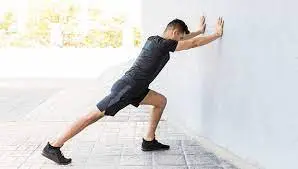
Toe-to-wall stretch
- The toe-to-wall stretch is ideal if the runner’s stretch makes your shoulder joints uncomfortable. It places less force on the upper body. Like the runner’s stretch, this exercise assists mobility by decreasing stress on the Achilles tendon.
- Follow these steps with the leg that is causing discomfort or pain.
- Stand facing the wall & place your toes up & opposed to the wall. The higher you place your toes, & the down the stretch.
- Lean forward, keeping your heel on the floor. Your other leg is in back of you, toes forward & heels on the ground.
- Hold for 30 seconds. Complete 3 reps.
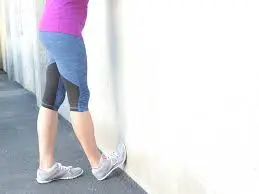
Heel drop
- Another Achilles tendon stretch is the heel drop. You can do it on a staircase. If you need to use a stepladder, make sure it is locked in position.
- Do this stretch with the leg that has an Achilles tendon matter.
- Carry on to the railings of the staircase or ladder.
- Grip the ball of your foot on the edge of the bottom step.
- Let your heel drop down, & allowing your other foot to relax position.
- Hold for 30 seconds. Complete 3 reps.
- If you have trouble balancing, do this exercise under the supervision of a healthcare professional.
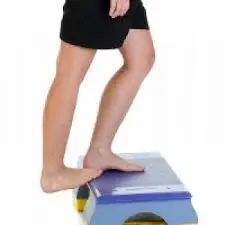
Flexibility Stretches
- Tight calf muscles put more strain on the Achilles tendon during daily motion & intense physical tasks. This is why physiotherapists suggested exercises that build or restore flexibility in the calf muscles.
- Studies show that stretching the calf muscles & the tendons around the ankle joint can assist decrease the pain associated with insertional Achilles tendonitis. It may also be helpful for mid-portion tendonitis, however, the research is still not conclusive on this.
Gastrocnemius Stretch
- The gastrocnemius is to greatest calf muscle & makes up a portion of the Achilles tendon. To stretch this area:
- Stand fronting a wall with your feet hip-width apart & staggered, with the injured foot in the back.
- Keeping the heel of the hindfoot on the ground & the knee straight, bend or flexed the front knee joint.
- Incline into the wall until a low to moderate-intensity stretch is felt in the calf of the back leg.
- Hold the pose for 30 seconds. Repeat three to five times. This can be done various times a day.
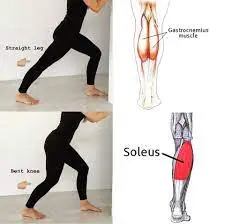
Soleus Stretch
- The soleus is a smaller & deeper calf muscle that also makes up a significant part of your Achilles. To increases flexibility in this structure:
- Face a wall and stagger your feet, keeping the painful leg in the back.
- With the heel of the back foot on the ground, & slightly bend or flexed the knee joint on the painful leg.
- Shift your body weight toward the wall without lifting your affected heel off the ground. Stop when you experience a stretch in the lower part of your calf.
- Maintain the hold for 30 seconds before relaxing. Try 3 to 5 repetitions at a time & repeat this twice daily.
Towel stretch
- Sit on a firm surface with your affected leg stretched out in front of you. Loop a towel around the ball of your foot & pull the towel toward your body, keeping your knee joint straight. Hold this position for thirty seconds & repeat it three times.
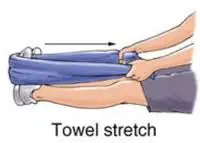
Standing calf stretch
- Facing a wall, & put your hands as opposed to the wall at about eye level. Keep the affected leg back, the unaffected leg forward, & the heel of your affected leg on the floor. Turn your affected foot slightly inward as if you were pigeon-toed as you slowly lean into the wall until you experience a stretch in the back of your calf. Hold for thirty seconds. Do this several times a day
Standing soleus stretch
- Stand fronting a wall with your hands at about chest level. With both knees joint slightly bent & the affected foot back, gently lean into the wall until you experience a stretch in your lower calf. Once again, slightly toe in with the affected foot & keep your heel lower on the floor. Hold this for thirty seconds. Return to the starting position. Repeat three times.
Plantar fascia stretch
- Standing with the ball of your affected foot on a stair & slightly toed out, reach for the base of the step with your heel until you experience a stretch in the arch of your foot. Hold this position for thirty seconds. Relax & then repeat three times.
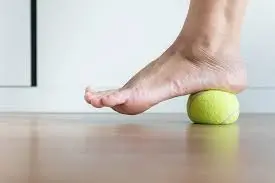
Strengthening exercise
How to get back into exercising
Initially, anyone with an Achilles injury should relax the leg & use an ice pack to assist ease the swelling. The best way to get back into exercising afterward is to wait until it isn’t painful & to take things slowly.
While rehabilitation may vary among individuals, the first two months usually focus on preventing re-rupture. During the 3 months, people typically work on increasing calf muscle strength. Over the next three months, rehabilitation attempts to assist a person return to sports.
In addition to stretches, rehabilitation may involve lighter exercises, such as walking, jogging, cycling, or swimming.
According to the American Orthopaedic Foot & Ankle joint Society, people can usually start normal jogging within 3–6 months of an Achilles rupture. However, they note that it can take longer, sometimes six-nine months, to get back to sports that include pivoting or jumping. Some people find that it takes extra than a year to get back to full strength.
calf strengthening exercises
You can also do exercises to strengthen your calf & heel muscles. These muscles are connected to your Achilles tendon, so it is important to keep them strong. It will decrease stress on the tendon & stop future problems.
Doing muscle-strengthening exercises will also make your Achilles tendon powerful.
Seated heel raises
- During seated heel raises, the muscles in your calves work together to elevate your heel. This increases strength & provides support for the Achilles tendon.
- Sit on the edge of a bed. Place your feet shoulder-width apart.
- Elevate your heels as high as possible, pause, & then slowly down them.
- Complete one set of 20 to 25 reps. Repeat 5 to 6 times per day.
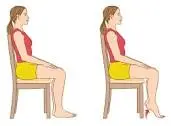
Standing heel raises
- If it experiences comfortable, you can do heel raises while standing up. This variation also engages the muscles to connect to your Achilles tendon.
- Stand with your feet shoulder-width apart. Hold on to a chair for support rt.
- Elevate your heels and rise onto the balls of your feet. Pause, & then slow down your heels.
- Complete one set of 20 to 25 reps. Repeat up to five to six times each day.
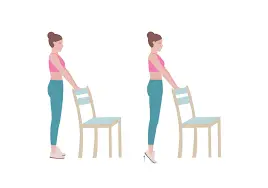
Resistance band calf exercise
- You can also use a resistance band to tone your calf & heel muscles. This exercise strengthens these muscles by forcing them to work as opposed to resistance.
- Start with a light resistance band. As your tendon gets stronger, you can use a thicker band with extra resistance.
- Sit on the floor or on a bed. Extend your legs straight out in fore of you.
- Wrap a resistance band around the ball of the foot you want to stretch, bending or flexing your knee joint slightly. Hold the ends with your hands.
- Pull the band to flex or bend your foot on the way to you.
- Pause, release, & point your foot to one side.
- Total three sets of 10 to 15 repetitions.
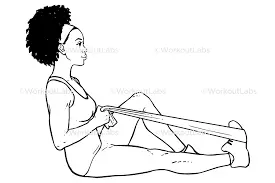
Toe raises
- Stand in a normal weight-bearing position. Support back on your heels so that your toes come off the ground. Hold this position for 5 seconds. Repeat 10 times. Do 3 sets of 10
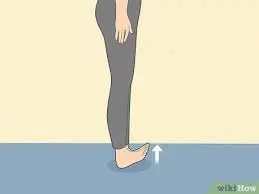
Single leg balance
- Stand without any support and attempt to balance your injured leg. Begin with your eyes open & then try to achieve the exercise with your eyes closed. Hold the single-leg position for 30 seconds. Repeat 3 times.
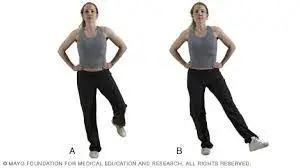
Heel raises
Standing, stability yourself on both feet behind a chair. Rise up on your toes, hold for five seconds, & then lower yourself down. Repeat 10 times. Do 3 sets of 10.
You can target your Achilles tendon with an exercise that is easy to do just about anywhere: heel raises. We will show you several variations:
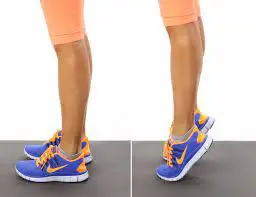
Standing heel raises
- Stand with your feet shoulder-width apart. Elevate onto the balls of your feet, lifting your heels. Hold the position for a moment, & then slowly down yourself back down. Repeat several times. If you experience off-balance, you can place your hand on a wall or a piece of furniture for support.

Seated heel raises
- If the standing & bent-leg heel elevates experience is too intense, you can work up to them by sitting with your feet flat on the floor shoulder-width apart & your knee joint at a 90-degree angle. In that position, elevate your heels, hold the pose for a moment, & then down them back down.

Bent-leg heel raises
- Repeat the above process, but do it with your knee joint bent or flexed. This can be based on a small bend, but it makes a big difference. Bent-leg heel raises target your soleus muscle while the standing heel raises target your gastrocnemius muscle. Both play key roles in assisting your Achilles tendon.
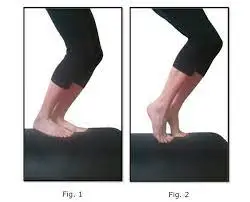
Toe pulls
- Sit on the floor with your legs extended out in fore of you. To keep away from locking your knee joint, bend or flex your legs slightly.
- fold or wrap a towel, strap, or resistance band around the ball of one foot. Then gently pull the item on the way to you to flex your foot. Hold the position for a moment, & then gently release the tension and relax position.
- This exercise strengthens your Achilles tendon by making it work to keep away from the resistance. The harder you pull, & the more work your tendon will do. But don’t pull too hard. It should experience like your calf is working, but it should not experience pain. Overdoing it could lead to injury.
- With these easy, at-home Achilles tendon exercises, you can assist your body’s biggest tendon. But if the exercises experience particularly challenging or painful, stop doing them & talk to us. It could be a symptom of Achilles tendonitis or inflammation in your tendon. If you have Achilles tendonitis, we can manage the issue & assist you to keep away from a more serious problem.
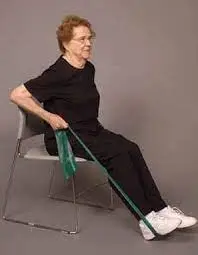
Exercise to avoid Achilles tendinitis
When dealing with acute Achilles tendon damage or moderate to severe pain, there are certain motions that can aggravate it. Knowing what Achilles tendonitis exercises to keep away from is an important part of building a safe & effective exercise program. Keep rotating to learn which exercises you should not do.
Avoid These Exercises
The calf muscles & connected Achilles tendons are specifically made to point the toes & elevate the heels off the ground. This provides the power you need for pushing off motions like walking, running, & jumping. Minimizing these moves can assist relieve pain. Safe Exercises for Achilles Tendonitis
Excessive Running
Running requires a lot of ankle joint stability & strength. Each time you push onward your calf muscles are working hard. Taking a complete rest from running may be necessary for more severe symptoms. Otherwise, modification is possible without completely stopping. Try shortening your run distance, reducing your cadence, & keeping away from running on hills. You may also want to try shoe insoles or orthotics for more support. Choosing the Best Insoles
Excessive Stretching
Too much stretching can actually cause aggravation. This is particularly true if you have ankle joint instability or you are very flexible or moveable, to begin with. If you are having issues with joint hypermobility, some stretches specific to the calf muscles may be enough. Whereas, if you tend to be stiff you can stretch for 10-25 minutes as needed each day. Listen to your body to keep away from overstretching.Try these calf stretches that are safe for an affected Achilles tendon.
Plyometrics
Jump training & high-intensity move put a lot of strain on the ankle joint, particularly the calves & Achilles tendon. It is best to keep away from them until you get your pain under control. Then, you can gently build back into them. After an ankle joint injury, it is best to start with coordination & proprioceptive exercises before getting back to full jumping
Certain Sports
If you participate in sports, you will help to modify your tasks for a while to get your symptoms under control. Any activity that needs running or jumping may require a rest break from one -six weeks depending on the severity of the injury. Sports to keep away from or take a short rest break from involve baseball, gymnastics, soccer, softball, basketball, & tennis.
Daily Activities Causing Achilles Tendon Pain
With Achilles tendinitis, it is also important to pay attention to some daily activities or tasks that might be increasing your pain without even knowing it. Try to keep away from these certain motions as much as possible to allow healing & prevent a progression to Achilles tendinopathy. If that is not possible, get the most support & protection possible. Observe orthotics, bracing, or utilizing Achilles tendon taping.
Walking Up Hills or Stairs
Any move that includes climbing or an upward incline requires more strength & power from the calf muscles gastrocnemius and soleus. This puts more tension & strain on the Achilles tendon each time you take a step onward. If you plan to walk, & choose a flat route without hills. If you have stairs at home, limit the number of times you help to use them & use an elevator when in buildings. You can also modify the way you are walking up your stairs by using other muscles in your lower leg like the hips & knee joints more than your ankle joint.
Standing on Your Toes
Any activity or task that requires elevating your heels up off the floor directly stresses the Achilles tendon as the calf muscles are activated. Thus, this is one of the most irritating moves you can do, especially when your heel drops back to the ground after elevating it up. Keep away from walking on your toes, standing on your toes to hold out anything, or wearing high-heeled shoes when you can. Do your greatest to keep your heel bone on the ground.
Tips for Safe Exercises
When it comes to Achilles tendon healing, the biggest factor is allowing enough rest before getting back to your normal activities or tasks (gradually). Keep these points in mind to maximize your results:
Do These Stretches Before Exercising
- Choose good shoes. Make sure you have good ankle joint & foot support in your shoes. Having a slight elevate in the heel can give your Achilles tendon a little break with activities or tasks like standing, walking, & running too. You can also add an orthotic insert or insertional heel elevate.
- Get pain relief with self-treatment. The use of ice, heat, TENs, gentle stretches, and soft tissue massage are all great ways to promote circulation for healing. Plus, reduce pain without reliance on anti-inflammatory medications like ibuprofen.
- Always warm up. After a period of rest, first thing in the morning, or prior to higher-level activities or tasks, always try to warm up the ankle joint with some gentle stretching & motion.
- When in doubt: modify. If you are feeling pain with a particular motion, make it easier or change your mechanics to reduce discomfort when possible.
- Make sure you take enough rest. While too much rest can be detrimental to ankle joint strength & flexibility, too little rest is a more common issue that can lead to chronic pain & lingering issues.
- Make healthy lifestyle choices. Healing from an injury is boosted when you make good lifestyle choices related to diet, stress management, exercise, & sleep.
- If you need more guidance, consider doing a round of physiotherapy to get personalized suggestions & possible healing quicker.
- How Exercise Increases Achilles Tendon Injury
- When you ignore painful symptoms it can lead to further damage & aggravation, and in this case, can even cause an Achilles tendon rupture. Achilles tendonitis is most often caused by overuse- thus healing will help with a reduction in intensity & activity.
Choosing the Right Exercises
Exercising your lower leg after an ankle joint injury helps a delicate balance of rest & motion. When you tune into your symptoms, you can use them as a guide to decide what is right for you. If your symptoms are not getting better within a few weeks or get worse, make sure to get in touch with your orthopedic doctor or physical therapist for medical advice.
FAQ
How can I prevent Achilles tendinitis?
To reduce your risk of Achilles tendinitis:
Warm up before you exercise or play sports. Focus on stretching exercises, & especially stretching your calf muscles.
Do a variety of exercises to keep away from repetitive stress on the Achilles tendon.
Accelerate the length & intensity of your exercises slowly rather than all at once.
Keep your muscles mobile by staying in shape all year round.
Wear supportive shoes that fit well.
Avoid running uphill or on uneven ground.
If you notice symptoms of Achilles tendinitis, such as pain, stop what you are doing & rest or relax position. Then talk to your provider about the next steps or tasks.
How can I take care or manage of myself if I have Achilles tendinitis?
Achilles tendinitis can be frustratingly slow to heal. It can take time for your symptoms to vanish totally. Follow your healthcare provider’s instructions, so you do not re-injure the tendon & increase the symptoms.
If you are trying nonsurgical treatments to keep away from or delay surgery, expect to wait a few months to see improvement. To keep the tendon healthy:
Attend physical therapy.
Avoid certain activities or sports.
Stretch the muscle.
Wear supportive shoes.
If you are healing from surgery, follow your provider’s instructions for the recovery period:
Attend physical therapy.
Do range-of-movement exercises to keep the tendon moving.
Wear your cast, splint, or boot for the needed period.
What’s the outlook for people with Achilles tendinitis?
People can recover from Achilles tendinitis. But get treatment as soon as you experience symptoms. The longer you live with the pain, the harder & longer the treatment or management process will be.
Most people have good effects from Achilles tendinitis surgery. The factor that affects your healing is how much of the tendon was injured. People with a lot of tendon injuries need a longer healing period.
Physiotherapy plays a big role in your rehabilitation, either as a management method or as part of your healing from surgery. It can assist you to regain your strength & function.
What is the rapid way to heal Achilles tendonitis?
Self-care strategies involve the following steps, often known by the acronym R.I.C.E.:
Rest. You may need to keep away from exercise for several days or switch to an activity that does not strain the Achilles tendon, such as swimming. …
Ice.
Compression.
Elevation.
What is the best physiotherapy for Achilles tendonitis?
Gentle exercise.
Loading of the tendon by applying weight or resistance to it through exercise is beneficial for healing from Achilles tendinopathy. You may begin by performing gentle strengthening exercises in a seated position (eg, pushing and pulling on a resistive band with your foot).

